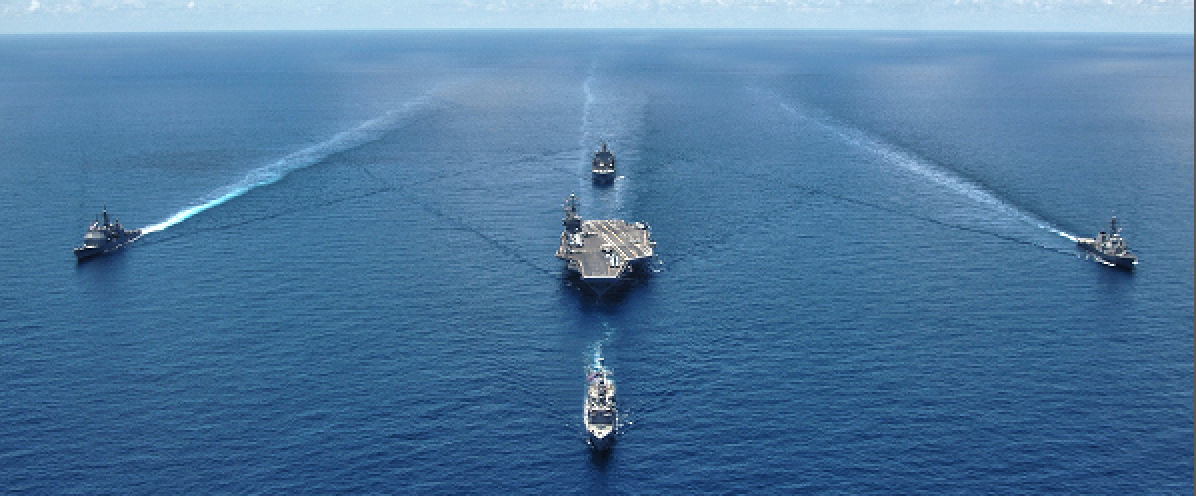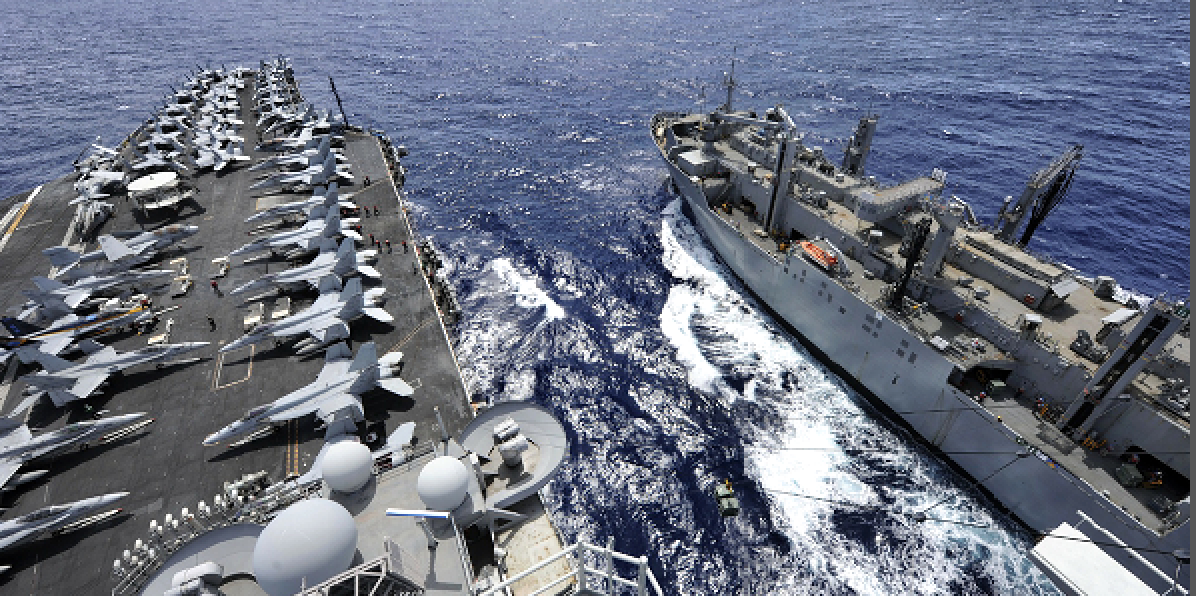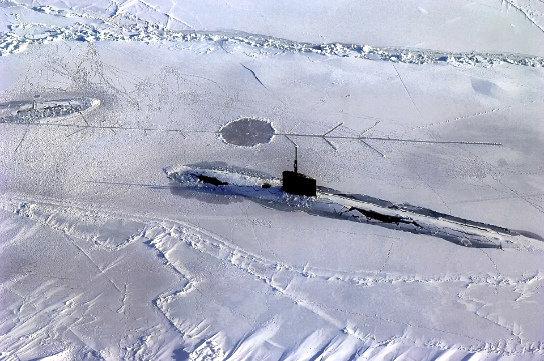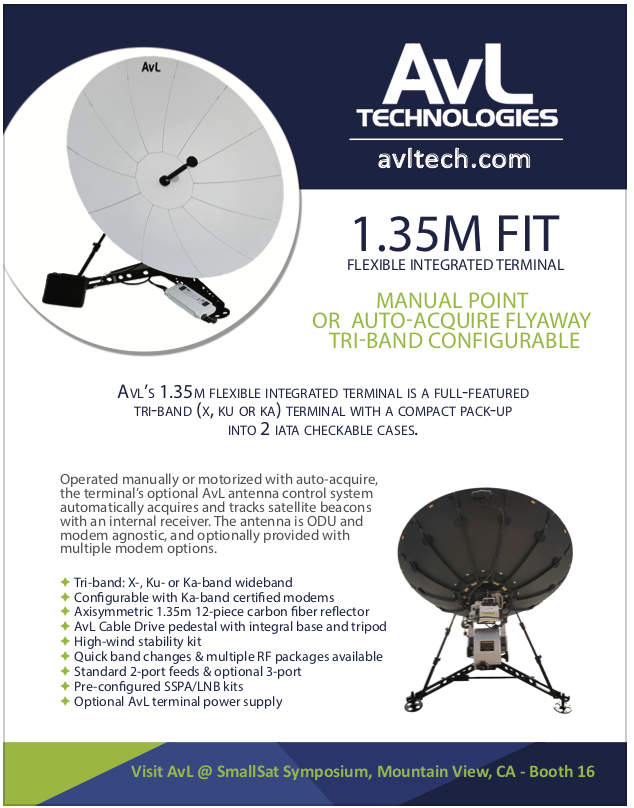The emergence of new SATCOM capabilities is helping the DoD pursue imperatives such as resilience and multi-domain joint operations across the armed forces. Bill Joo, with the U.S. Navy’s Communication Program office talks about the challenges and progress of these new initiatives with Constellations host, John Gilroy.

Welcome to Constellations — we are going to discuss the SATCOM challenges the U.S. Navy faces, as well as issues across the armed forces such as the importance of interoperability. The guest is Bill Joo, special projects engineer at the U.S. Navy’s Communication Program office.
Bill, can you tell us a bit more about how you fit into the Navy’s communication program office?

Bill Joo
My role as a special projects engineer seems a bit nebulous, but it is to basically take care of any advanced technologies we are trying to deploy for the Navy. Many technologies have evolved quickly over the past several years, from proliferated LEO and various PNT systems to determine where we are on earth, to the SpaceX Starlink constellation that’s disrupting space and how we potentially communicate. My job is to discover and try to exploit those technologies to deliver capabilities for our fleet.
What sort of capabilities does the Navy need for its future SATCOM network?
Bill Joo
Because of the Navy’s unique mission, operating in the blue waters where there’s no real infrastructure, SATCOM is really the only means of delivering high throughput data with protection to the warfighters at sea. Not the nominal variety, as if you were on a cruise ship and you’re able to dial up a high-speed internet. For us, we need to be able to provide protected communications mindful we will likely be in harm’s way where comms will be challenging.
We call that RSC3, or resilient communications with command and control. Obviously, command and control is not possible without resilient communications. One of the evolving technologies is this notion of a proliferated Low Earth Orbit constellation. SpaceX and Starlink started that process, and now there’s also Amazon’s Kuiper, OneWeb, Telesat, and others.
Those constellations hold great promise for delivering high throughput capability. And, oddly enough, there is some inherent protected nature with these communication systems, so we may be able to deliver both high throughput and some level of protection using commercial SATCOM. But of course, our go-to is military SATCOM, whether AEHF or the Wideband Global Satellite systems.
Thousands of satellites going up might mean resiliency, yes?
Bill Joo
Correct. SpaceX is aiming to launch 42,000 satellites. To put that into context, when SpaceX started, we had no more than 2,000 satellites of the communications variety.
If SpaceX is capable of delivering those 42,000 satellites, this is an order magnitude improvement in the number of apertures that will be available in space. They are already at 2,000 [as of this interview] and we’re looking forward to other constellations supplementing this. The future is looking bright for communications.
With all these new technologies coming up, how do you evaluate new technologies for the roadmaps that you’re seeing?
Bill Joo
The primary mechanism is through our science and technology forecasts. We try to learn from industry and what’s moving forward in technology. And they’ve been very, very open with us in terms of what they expect to do, how they expect to deploy these capabilities, not just for their commercial interests, but for the military applications. It’s not necessarily always about wartime functionality. Sometimes it’s just simple things like morale, welfare, and recreation. In this COVID-19 environment, we’ve had ships that were anchored offshore nearly a year.

Sailors have not been able to really take advantage of any kind of communications means that they’d normally have when they go ashore to stay in touch with their families and such.
We find that delivering even communications capabilities in the commercial sense to the warfighter will improve their morale and possibly their warfare readiness. There’s an interesting dichotomy between military and commercial communications, but also a nice fusion between the two.
Trying to project out some of those forecasts or roadmaps, what do you think the biggest challenge is going to be? Will it be in interference, in the ground, in security? Where are the challenges going to be for your future SATCOM?
Bill Joo
We’ve had a pretty easy run the past dozen years or so, whereby we’ve been able to deliver a lot of throughput. In fact, the Navy’s data throughput to ships have increased by almost two orders of magnitude in 12 years, which is pretty impressive. Now the real challenge comes in terms of cyber threats, and the actors are not the usual variety, and it’s not always about the warfighting readiness, but cyber threats to our control systems, not necessarily the data systems.
In the past, we worried about anti jamming, but now we find the threats are against the actual satellite control and management. We will need some resiliency and hardening in that domain, if we’re going to try to rely on these high throughput satellites, where the control and management systems can be compromised. The threats have become much more sophisticated, such that jamming is rather crude by today’s standards.
How does the Navy work with the U.S. Space Force?
Bill Joo
Our relationship with the U.S. Space Force (USSF) really hasn’t changed any of the dynamics. Establishment of the Space Force has now given space a bit more focus. I believe in the past, when we were working with the U.S. Air Force, there was a vague mission as to whether the Air Force is responsible for everything that’s up in the air and space domain, which gets a bit cloudy as to the emerging space domain.
For the Navy, for instance, we ran the newest program, and we launched those satellites, as well. It became ambiguous as to who actually controls the space domain.

Having Space Force clearly delineates the domains and allows us to focus on space and the special challenges and opportunities that exist there. The Space Force establishment is a good move, although it was a bit ambiguous in the beginning.
Speaking of different forces and aspects of the DoD, how is the Navy participating in the DoD’s Joint All-Domain Command and Control, JADC2? How will they participate in that vision?
Bill Joo
We are clearly part of the JADC2 implementation, which is beyond a vision at this point. Admiral Smalls has been assigned to run a project called Overmatch, which is a subcomponent of JADC2. Overmatch essentially is taking JADC2 and putting in the implementation hooks, basically aligning all of our programs to ensure that we are delivering a focus capability at the end of the day.
I think what you’re hinting at is this concept of interoperability, so that Space Force, Air Force, Army, Navy, all will work together to enhance your effectiveness. Is that right?
Bill Joo
That’s correct. We take that joint notion very seriously. Fortunately, in the space business, we all converge on a common set of apertures and platforms. Therefore, we work very closely with the Army and U.S. Air Force research laboratories. I believe we are well aligned in terms of the jointness of the fight.
Of course, that common domain called space helps to glue this fabric together.
In the world of software and large enterprise systems, everyone’s talking about open standards and so my question to you is, are there open standards that the armed forces could adopt to fast track this interoperability or maybe even expand capabilities?
Bill Joo
Yes, great question. Open standards and interoperability have been the windmill that we’ve been seeking. The problem is that there are too many. You may be implementing an open standard, but that does not guarantee interoperability or the ability to expand the intended capabilities.
We’ve been pursuing what’s called P3I, which is Preplanned Product Improvement. With P3I, we will define a limited set of standards that we plan against for the future, versus letting open standards dictate where we go in the future.
For instance, in the intermediate frequency domain, we’ve had lots of work in the digital intermediate frequency interoperability standards development. We ended up with about a dozen different standards.
Recently, we’ve joined the Digital IF Interoperability Consortium, which takes a common standard called VITA 49 and we specify exactly how we intend to use this in a pre-planned manner. By dictating standards early and limiting them to just a few sets that the coalition can agree on, we could potentially extend capabilities and ensure interoperability in the future.
Once again, we need to focus on what we pursue as common standards. It seems you’re trying to influence some of these standards before they go down the pike and ensure that they meet some of your Navy requirements. Is that correct?
Bill Joo
Yes. Again, with the DIFI consortium, we didn’t just simply stand by and watch an industry group define us. We joined as a member, and we’ve encouraged other organizations, such as PM West from the U.S. Army, to join so that we can collectively influence where that commercial standard goes. That is a critical part of making any open standard come alive.
Admirals and generals like to think big. One big idea is this concept of digital transformation. Everyone has a different idea of it. From your perspective, what is the Navy’s approach to digital transformation?
Bill Joo
I can’t speak for the big Navy as a whole. I will tell you that we have been pursuing digital twins. Rather than deploying systems and learning on the job, we have initiatives such as Chimera, which tries to create digital training twins and study the effects that will impact them early and often.

Submarine in the Arctic.
Digital transformation from a communications point of view, for me, is that we’ve been living off of a lot of analog systems and for good reason. They function extremely well.
The notion of legacy typically means that it works well, and why throw out something that doesn’t fail? Going the digital path in the communication sense involves taking all of our systems, reviewing how we do signal processing and possibly going down the path of digitizing every element so we can have a force multiplying effect.
For instance, if we tie a digital radio system with a digital radar system, we blur the line as to what an electromagnetic system even looks like. By blurring that line, we may find that communication systems can use a radar system to actually communicate and vice versa. We want to get to a point of convergence, and that’s what digital transformation means for us.
Again, we’re coming more from the communication side, but digital twins gives us the ability to do a lot of analysis before we encounter our adversaries.
Convergence would seem to give you all kinds of resilience, which was one of the primary goals to start with, wasn’t it?
Bill Joo
That’s correct. Resilience for us, ultimately, is about the warfighter being able to perform his or her mission without necessarily counting on systems to do exactly what they’re supposed to.
Resilience is the ability to reform what we have and develop new capabilities on the spot in a MacGyver type of way. I believe digital transformation will play a major role in yielding resilience for Naval shipboard communications and ENT systems.
Want to hear from more thought-leaders? Listen to Constellations podcasts as they become available.
See the full list of interviews and subscribe at: www.kratosdefense.com/constellations-podcast Want to hear a particular topic discussed? Let us know!
Email Podcast@KratosComms.com


